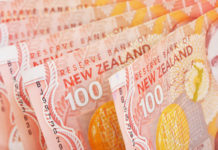Markets
“All” it took for US investors to digest Friday’s strong payrolls was a weekend of time, another eye-opening WSJ article and a strong US non-manufacturing ISM. Recall that the initial post-payrolls move (higher yields, stronger dollar, weaker stocks) was surprisingly undone by last week’s US closing bell. The trading week yesterday still started with some positive Asian vibes related to looser Chinese Covid-moves, but morphed to a very neutral setting in Europe and eventually a risk-off climate in the US. The WSJ emphasized that the biggest Fed policy mistake would be letting its guard down when it comes to inflation, with next week’s “dot plot” likely to show a policy rate peak of 5.25% compared with 4.75% in September and 5% discounted by money markets. Shifting from 75 bps rate hikes to 50 bps increments means that policy rates will stay at their peak for longer, unlike the 50 bps of rate cuts priced in by the end of 2023. The November US services ISM unexpectedly bounced from 54.4 to 56.5 (vs 53.5 expected). The Holiday Season clearly left its mark. Details showed a significant rise in business activity, from 55.7 to 64.7. New orders grew at a similar pace (56 from 56.5), but export orders contracted much faster (38.4 from 47.7). Employment switched sides again from the neutral 50, rising from 49.1 to 51.5 with price pressure still alleviated (70 from 70.7). Fed Chair Powell last week noted that core services may be the most important category for understanding the future evolution of core inflation. Supplier deliveries slowed further with the ISM noting increased capacity and shorter lead times which resulted in a continued improvement in supply chain and logistics performance.
US Treasuries finally made their U-turn, significantly underperforming German Bunds. US yields rose by 3.7 bps (30-yr) to 14.1 bps (3-yr) with the curve turning more inverse. Technically, the US 10-yr yield bounced off 3.5% support (previous cycle high back in June). Changes on the German curve varied between -1 bp (30-yr) and +2 bps (5-yr). The German 10-yr yield bounced off the October low at 1.77%. US stock markets started on the backfoot and continued losing ground throughout the session to eventually lose 1.5% (Dow) to 2% (Nasdaq). The dollar caught a break thanks to the yield support and the risk-off setting, with EUR/USD closing at 1.0491 from an 1.0532 open and after almost touching 1.06 early in the session. The trade-weighted greenback recovered from an intraday low just north of 104 to currently 105.45. USD/JPY rose from 134 to 137 with rising (real) rates beating risk sentiment. EUR/GBP moved away from 0.8569/67 support in a technical move, to currently meet the 0.86 big figure. Today’s eco calendar only contains US trade data. Chinese stocks take the upper hand again this morning on the back of further loosening of Covid-restrictions, but weren’t the best guideline for Europe/US of late. A slightly more hawkish Australian central bank (see below) could be more sign of the times.
News Headlines
The Reserve bank of Australia raised its policy rate by 25 bps to 3.1%, as expected, bringing the cumulative amount of tightening to 3.0% since the start of the cycle in May. The central bank expects to increase interest rates further over the period ahead, but said it is not on a pre-set course. Inflation at 6.9% in October is still too high and is forecast to peak around 8% over the December quarter, but is expected to decline next year. The economy continues to grow solidly, but growth is expected to slow to about 1.5% in 2023 and 2024. At 3.4% the unemployment rate is at the lowest since 1974. However, with quite some tightening already done, the RBA indicates that monetary policy operates with a lag and that the effect of interest rate increases is yet to be felt. The path to achieving the needed decline in inflation and achieving a soft landing for the economy remains a narrow one. The 2-y Australian government bond yield rose 9 bps (to 3.07%). The Aussie dollar this morning gains modestly (AUD/USD 0.6735), but is unable to reverse yesterday’s USD driven decline.
Bloomberg cites sources that the EU and the US are weighing a new approach to implement their climate agenda by raising new tariffs on Chinese steel and aluminum as part of a plan to reduce carbon emission and overcapacity in the sector. However, according the report an agreement is unlikely before late next year.












